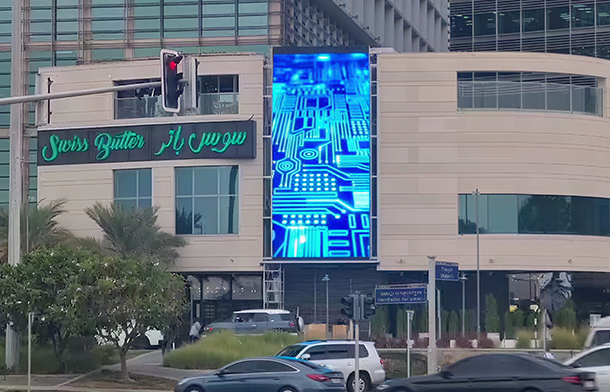 English
English
2025.10.10
As display devices exposed to complex environments for extended periods, the lifespan of outdoor LED displays is crucial not only for the cost-effectiveness of the initial investment but also for their long-term operational stability. While a high-quality outdoor LED display can typically operate reliably for 5 to 8 years with proper use, many units in practice experience premature issues such as brightness decay and frequent malfunctions.[1] These problems are closely linked to several key factors.
The performance of the LEDs is the fundamental core determining the lifespan of an outdoor LED display. As the "pixel units" of the screen, these beads are directly responsible for light emission and color representation. High-quality LEDs utilize high-purity chips and superior encapsulation materials, providing excellent resistance to degradation. They exhibit a low rate of brightness decay even under prolonged high-brightness operation (typically less than 10% decay after 10,000 hours).
Conversely, inferior beads often suffer from poor chip heat dissipation and weak anti-aging properties in their encapsulation adhesive. This can lead to significant brightness reduction and dead pixels within just 1-2 years, directly shortening the display's overall lifespan. Furthermore, the waterproof sealing of the beads is critical. In an outdoor setting, any gaps in the encapsulation can allow moisture to penetrate, causing internal short circuits and accelerating damage.
Structural integrity acts as a protective shield for the outdoor LED display, and its design directly impacts the device's ability to withstand external environmental forces. Outdoor displays must endure constant exposure to wind, rain, and UV radiation. If the structural frame is made from standard steel instead of corrosion-resistant materials like galvanized steel or aluminum alloy, it can easily rust and deform. This can lead to misalignment of display modules and damage to internal wiring.
Additionally, the enclosure's waterproof rating (which should be IP65 or higher) and the design of its heat dissipation system are critical. Inadequate waterproofing can allow rain to seep into internal components, while poor heat dissipation will cause the device to operate at elevated temperatures, accelerating the aging of its parts.

The stability of the driving circuitry is the power hub that ensures the consistent operation of an outdoor LED display. This circuitry is responsible for supplying a stable current and voltage to the LED beads. If low-quality driver ICs are used or if the circuit design suffers from uneven load distribution, it can lead to excessive current fluctuations. This not only risks instantly burning out the LED beads but also causes accelerated degradation due to long-term electrical instability. Moreover, the circuit's design for surge and lightning protection is vital. During thunderstorms, a lack of effective lightning protection can allow powerful electrical surges to destroy driver components, resulting in a complete failure of the display.
The operating environment and maintenance practices are critical external factors that influence the display's lifespan. Environmental conditions vary significantly by region and have a notable impact; for instance, high-temperature, high-humidity areas can accelerate component aging due to moisture. Dusty regions can lead to clogged ventilation openings, which compromises cooling efficiency. Environments with high levels of acid or alkali content can corrode the device's external housing and internal circuits.
In conclusion, the service life of outdoor LED displays is not determined by a single factor, but is the result of the combined effects of the performance of the LEDs, structural integrity, driving circuit stability, operating environment and maintenance, etc. When making a purchase, priority should be given to the quality of core components and structural design. During use, protective measures should be taken in combination with environmental characteristics. At the same time, a regular maintenance mechanism should be established to maximize the service life of the equipment and ensure its long-term stable operation.